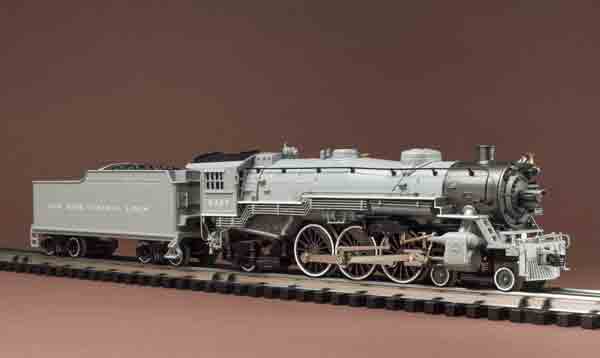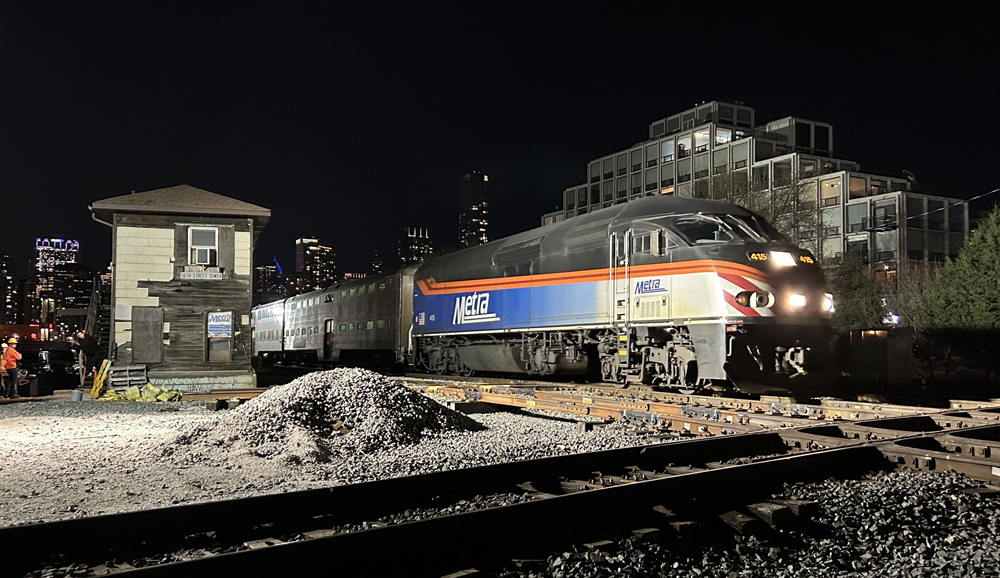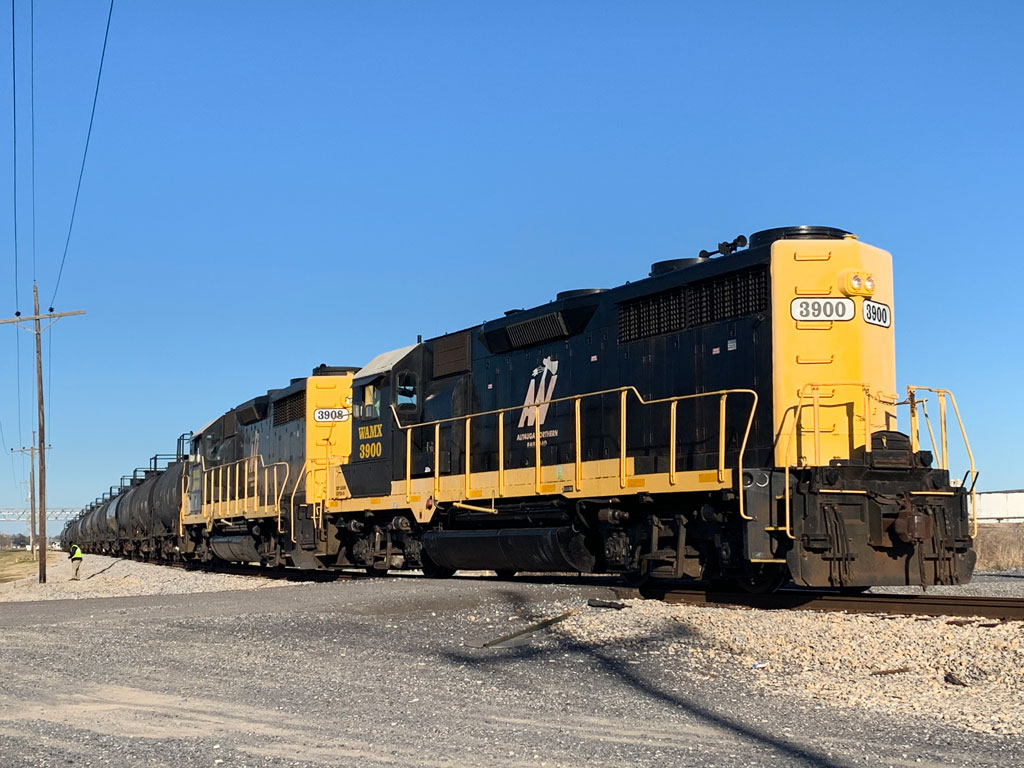Features: Can-style motors, headlight and backup light, directional lockout. True Blast Plus sound system with whistle, bell, chuff, and idle steam sounds. Current production road names: New York Central, Santa Fe, Southern Ry., and Wabash
Pacifics were not just passenger haulers, however. Railroads used them as needed, so freight, passenger, or even work trains would be suitable consists.
The latest O gauge locomotive fielded from Williams by Bachmann has a familiar look to it, because it is based on K-Line’s light 4-6-2 Pacific. The model is a good likeness of a U.S. Railroad Administration light Pacific or a post-World War I derivative of the design. It is a nicely detailed little gem, looking right at home on a traditional layout. Yet it is smart enough to fit into a less toy-like setting.
Opening the box
Our test sample was the New York Central gray version. This is a plus, not because it is a New York Central locomotive, but because all the detailing on the locomotive is easier to view.
The slats in the pilot are clearly defined, as are the cast-in rivets “attaching” the pilot and brakeman’s steps to the frame. The uncoupler arm runs across the front bar of the pilot and is attached to the scale non-operating coupler on the front with a chain.
There is a deck below the smokebox, and steps rise up to the sideboards running along the boiler. The face of the smokebox has rivet, seam, and latch detail. There is a grab iron arcing beneath the smokebox door. A handrail starts mid-boiler and then runs up and along the sides of the boiler. The headlight is centered, and a number board is just below the light. Up top, the bell is just ahead of the smokestack, and the classification lights are at the 11 and 12 o’clock spots. Also visible from the front are the steam chests, which are accented with white paint on the gray ends.
The boiler has rivet, seam, and boiler band detail cast into it. Cast-in sand feed lines drop down from the sand dome. There is a brass-colored whistle by the sand dome and an add-on turbine near the cab. On both sides there are cast-in steps rising upward, just ahead of the cab.
Just below the sideboards is a nice collection of detail points. On the fireman’s side you’ll see an air compressor, a compressor reservoir, and air lines. A water drain line snakes from the boiler down to the rear of the cab. Below the cab you’ll also see rivets in the sides of the firebox.
On the engineer’s side are another air-compressor tank and a group of four brake-line pipes running from just behind the smokebox (feeding air to the pilot brake line) to below the end of the cab.
The cab is well done, with grab irons on the front and the end of the cab, side windows with “panes,” and crew figures inside. You’ll also find a decorated backhead with an open firebox for the firebox glow effect.
The locomotive and tender are connected with both a drawbar and a wire tether. Both trucks have two axles.
Paired with the die-cast metal locomotive is a plastic tender boasting a good level of rivet detail and steps at all the corners. The coal load is plastic and painted black. It is nicely cut into the tooling, and you get the sense there are lots of chunks of coal on board.
The tender deck has a cast-in water hatch and rivet detailing, while the rear of the model has a single backup light.The gray paint was perfectly applied. White accents on the drive wheels and the wheels on the pilot and tender wheels are well done and look spiffy. The locomotive is lettered New York Central Lines, a designation used for the New York Central west of Buffalo prior to adoption of New York Central System. Lettering of the text and engine numbers is clear and crisp.
On the test track
After a brief post-lubrication warm-up, the Williams by Bachmann Pacific ran like a champ.
This is a conventional-only locomotive with a standard forward-neutral-reverse sequence. After stopping for seven seconds or so, the locomotive will start in the forward direction. You can lock the locomotive’s direction through the directional lock switch beneath the tender.
The smoke unit on/off switch is located beneath the locomotive cab.
The motor function was quiet, and the running gear was squeak-free! The speed range was good (see the box), and the locomotive was able to handle with ease the eight to ten freight cars we could tack behind it.
The headlight was brilliantly bright. Check the locomotive box and you’ll find a bottle of smoke fluid and replacement light bubs. The steam chuffs of the sound package were good, and the whistle and bell were attention-getters.
Smoke output was a bit on the light side, which I presume was due to track voltage (the higher the power applied to the tracks, the more smoke is produced). Our test track lacks a long straightaway for high-speed (and high-voltage) running.
As an aside, I think Williams offers the best product information sheet in the industry. You get three line drawing views of the locomotive and two views of the tender, and every part is identified with its name and number. You get to see the position of the workings inside and out without needing to pop off the shell. Very cool!
The Williams by Bachmann O gauge Pacific has nice heft to it and is solidly constructed. It is a well-made product that will look right at home on a traditional three-rail layout or hustling commuters on a more elaborate pike. Check your Williams by Bachmann retailer for price and availability and you just may go home with one!














